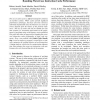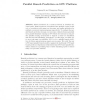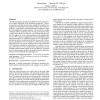328 search results - page 17 / 66 » Static performance prediction of skeletal parallel programs |
RTSS
1994
IEEE
14 years 17 days ago
1994
IEEE
The use of caches poses a difficult tradeoff for architects of real-time systems. While caches provide significant performance advantages, they have also been viewed as inherently...
CNHPCA
2009
Springer
13 years 11 months ago
2009
Springer
Abstract. Branch Prediction is a common function in nowadays microprocessor. Branch predictor is duplicated into multiple copies in each core of a multicore and many-core processor...
MICRO
2002
IEEE
14 years 1 months ago
2002
IEEE
Master/Slave Speculative Parallelization (MSSP) is an execution paradigm for improving the execution rate of sequential programs by parallelizing them speculatively for execution ...
HIPS
1998
IEEE
14 years 22 days ago
1998
IEEE
ZPL is a parallel array language designed for high performance scientific and engineering computations. Unlike other parallel languages, ZPL is founded on a machine he CTA) that a...
PPOPP
2009
ACM
14 years 9 months ago
2009
ACM
The efficient mapping of program parallelism to multi-core processors is highly dependent on the underlying architecture. This paper proposes a portable and automatic compiler-bas...



